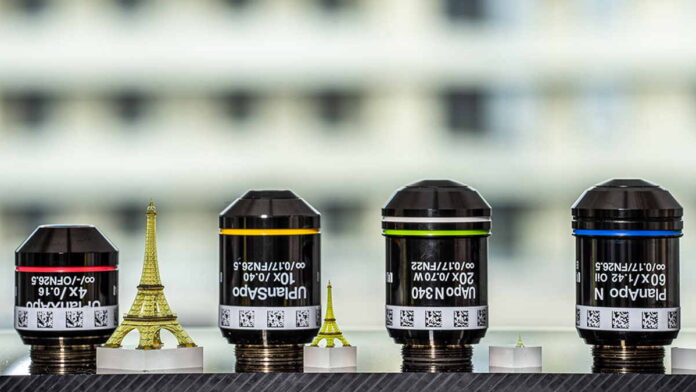Vienna based high-tech company, UpNano developed a high-end 2PP (2 photon polymerization) 3D printing system that can produce polymeric parts with a volume ranging from 100 to 1012 cubic micrometre. Patented NanoOne printing systems enable highly precise and fast production in nano, micro and middle ranges for 2PP 3D printing with the use of high-power laser. NanoOne brought an important innovation to 2PP 3D printing systems with these features; and was met with great interest immediately after its launch.
Founded in September 2018 as a spin out of the TU Wien, UpNano focuses on development, manufacturing and commercialisation of high-resolution 3D printing systems based on 2 photon polymerization. Head of Technology and Cofounder of UpNano Peter Gruber announced that they have recently developed and patented an innovative adaptive resolution technology for their 3D printing system. Gruber said that together with an optimised optical path and smart algorithms; they can utilise the full laser power up to 1 Watt, which is several times more than in comparable systems. This smart algorithm allows a widening of the laser spot up to a factor of 10 in accordance with the specifications of the printed specimen. A simple change of objectives (there are different ones available, ranging from 4x magnification to 100x) allows the production of parts in the micro-range with resolutions at the nanometre scale.
UpNano: High resolution 3D printing at nano and micro scales never seen before
CEO of UpNano Bernhard Küenburg told that the benefit of this innovation is most notable in the meso-range. Stating that the NanoOne system offers significant faster production times than other systems, Küenburg relayed; “Add our patented adaptive resolution technology to this; and you end up with a capability to print centimetre large objects with a micrometre resolution in short production cycles”.
An ultra-precise production technology, 2PP 3D printing can only be optimised for a very limited scale range. Due to the extremely long production time in the middle range (centimeters); it was not attractive for quantitative production in the industry. By contrast, nano and micro-scale resolution parts can now be printed in twelve size orders in times never before achieved. With NanoOne printing systems; A high-power laser, optimised optical path, a patented adaptive resolution technology and intelligent algorithms for laser scanning allow high-resolution 3D printing never seen before. UpNano recently printed four models of the Eiffel Tower, ranging from 200 micrometres to 4 centimetres. The company presented all small structures in 30 to 540 minutes; thus demonstrating the capabilities of the NanoOne printing systems.

NanoOne offers a new horizon for filtering and separation processes
With these features NanoOne has been met with great interest in R&D and in industry right after its introduction. In medicine, the system is used in the production of micro needles with tight tolerances and defined features; such as sharp tip, cannula or reservoir. Functional micro-mechanic parts reflect another interesting area of application for the UpNano technology. An example is a functional spring with a height of 6 millimetres printed in less than 6 minutes; or two-components parts with included moveable elements, printed in single printing jobs for med-tech applications. On the other hand, filters appear as another area that shows the size range of NanoOne. Sizes of several square centimetres with pore sizes in the low single digit micrometre-range can be printed within hours by the system. In this way, the NanoOne offers a new horizon for filtering and separation processes.
